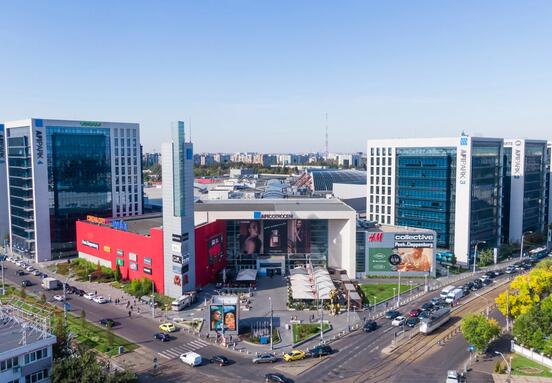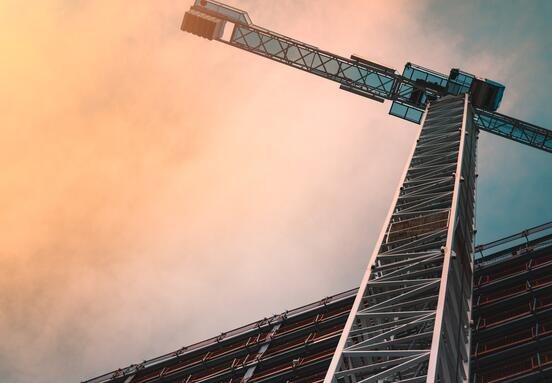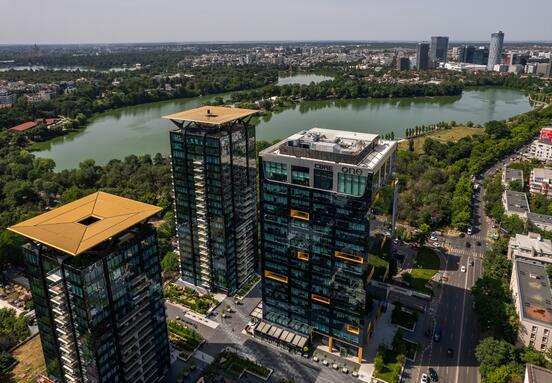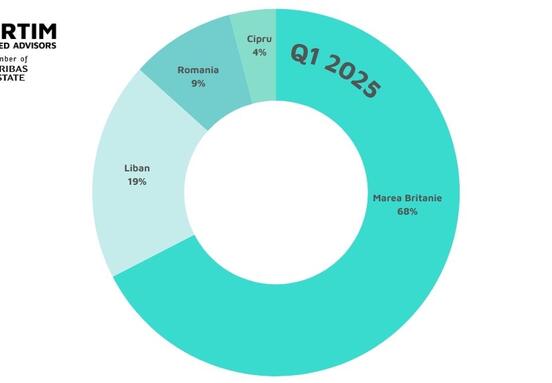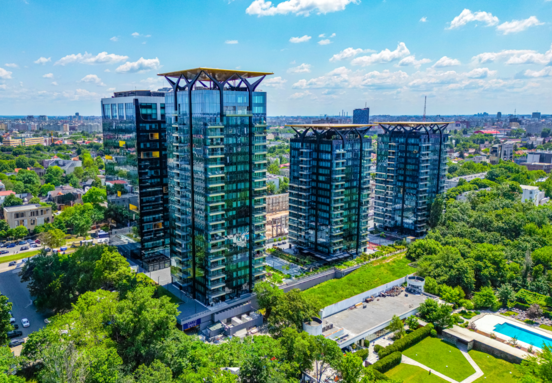The COVID-19 pandemic had a strong negative impact on the global economy throughout 2020, with a 6.4% yoy drop in GDP in the EU-27 area. Relatively, Romania’s GDP decreased by 3.9%. The lockdown period, as well as the restrictive measures instated by the Government, have led to the negative contribution to GDP growth of important economic sectors such as agriculture, industry and hospitality. With a 6.6% share of GDP, the construction sector seemed not only to survive the unprecedented conditions but to also thrive in 2020, being one of the few sectors with a positive contribution (0.8%) to the GDP growth.
“However, last year the local real estate market continued its evolution, the industrial and residential sectors exceeding even the most optimistic expectations. Although the future of the office market is uncertain, the volume of projects announced for delivery in 2021 indicates a confidence of developers in the ability to adapt to new conditions.”, says Ilinca Timofte, Crosspoint Real Estate Research Analyst.
The Romanian investment market went through a positive evolution in 2020, with a total investment volume which exceeded the expectations – volume reached a little over 805 M€ in 2020, a 32% increase yoy. Despite the uncertainty surrounding the future, the office sector remained in 2020 the investors’ preferred type of asset, with an 85.3% share in the total investment volume, followed by the industrial market with only 10.3% share in the total.
Bucharest attracted the majority of investments in 2020 (83%), although in the previous couple of years regional markets have emerged as a promising alternative to the capital city. However, in the current circumstances, investor approach has been cautious and betting on a more stable, established market such as Bucharest.
The market sentiment for 2021 remains positive, with over 140M EUR investments recorded in the first 4 months of the year and high hopes for a fast return to the previous years’ normal.
According to data published by the National Statistics Institute, 67,816 homes were delivered in Romania in 2020, a slight increase compared to 2019. Bucharest and Ilfov registered the delivery of 20,800 new units. 4,372 building permits were issued in 2020 in Bucharest and Ilfov county, a slight 3% decrease compared to 2019. The same minor decline has been noted on a national level, with 41,395 building permits issued in total throughout 2020. For 2021, around 180 residential projects are planned to be delivered in Bucharest and Ilfov.
Sales have gone up significantly in the fourth quarter, taking the yearly change to an 8% increase compared to 2019. The positive trend was registered on a national level as well, with regional markets like Cluj an Timis registering rises in demand of 30% and 25% respectively on a year-to-year basis.
The main change in client preferences, influenced strongly by the COVID-19 crisis and its repercussions on our lifestyle, has been the rise in demand for single-family homes. If this shift towards single homes continues in the following years, the residential market in the capital city might adjust accordingly, with a horizontal expansion towards Ilfov county, where large-scale development of such projects is possible. So far however, inner-city dwellings were preferred by buyers in 2020, with Ilfov registering a 6% yoy drop in demand.
The average prices for residential units has registered an increase in 2020, both for new and old dwellings. However, the increase was higher for old units, of around 7%, while prices for new units have only gone up by 2%. In case 2021 will follow the same trend, this aspect could encourage developers and drive potential buyers to the new market, given that the gap in prices between new and old units has already noticeably narrowed. The average price for new units in 2020 reached 1,435€/sqm, while old units averaged 1,351 €/sqm.
As regards the average price by area, southern Bucharest remains the cheapest, with average prices of around 1,000 €/sqm, while prices in the center-north average around 3,000/sqm. While minimum prices have somewhat maintained levels from previous years, the high-end segment has seen a substantial rise in prices in 2020 supported by strong demand, estimated around 20%.
The impact of the COVID-19 pandemic has been more obvious on rent values. Decreases of up to 15% in rents have been registered since March 2020 and the supply has gone up significantly. The increase in house sales, tenants leaving Bucharest and returning to their hometowns or choosing to work remotely from other locations have been the main causes that led to high vacancy levels on the rental market. This was also escalated by the students not returning to university centers, which is also an important driver for demand in campus cities. The entry on the long-term rental market of high-quality short-term rental properties, as a consequence of the reduced global and internal mobility, is a factor that caused a further decrease in rent levels.
The beginning of 2021 was a spectacular one, in terms of demand on the residential market with the highest sales volume recorded in the last five years on the Bucharest market, an increase of 39% compared to the first quarter of last year, given that prices have remained relatively constant since the end of 2020.
The largest land transactions in Bucharest totaled over 220 m € in 2020, with seven individual transactions of over 10M € each. Developers and investors have quickly caught up on the new turn the market has taken and shifted their focus on the residential market, while office development plans have been put on hold. The land market has been extremely dynamic in 2020, with over 118,000 transactions recorded in Bucharest and Ilfov county (72,175 transactions in Bucharest alone), a 95% yoy increase.
Land prices in Bucharest and adjacent areas have registered an increase during 2020. While the highest rises were recorded in central and northern inner-city areas, prices have also gone up on the outskirts of the city, especially in established residential areas.
Despite the rising prices, investor interest has been constant throughout 2020 and is expected to continue in 2021. This increase in prices will likely be counter-balanced by a smaller number of transactions in the following year. 2021 will also give a clearer view on one of the most talked about subjects in 2020, the deurbanization trend on the residential market. So far, equal rises in land demand have been noted both in Bucharest and Ilfov but the projects in the capital still outnumber those located around the city. Furthermore, residential clients preferred Bucharest to Ilfov in 2020. Still, a larger and more diverse supply in the following years may lead to a redistribution of demand in the future.

